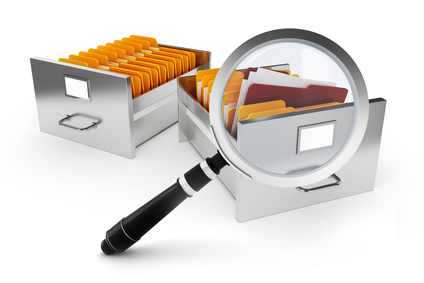Document Search Optimization
Posted on 2021-01-22

In a document management perspective, one of the key functions to manage documents is the ability to find documents in a fast and easy manner.
Traditionally, physical document searching is associated with rigorous way of organizing documents in to filing cabinets, or any document-storage facility. The more disorganized your documents are, the more it will be harder to find them.
Imagine your documents as books in a traditional library where its librarian often forgets to place each returned book to its original location. A library could contain hundreds or even thousands of books! It could become very nerve-racking to look for a misplaced book from an entire library.
Hence, a librarian may consider reviewing the library indices and validating each book to its proper location, costing his or her time and effort to revisit the process for not being able to organize the books accordingly.
With the advent of the modern digitalization, documents and books can be now converted electronically, making use of advanced computing mechanisms to make the process of document searching faster and simpler than before.
Now, let’s talk about how we can optimize the method of searching an electronic document. Electronic documents contain information and metadata that can be used for searching. With the availability of these information, advanced techniques of document searching are already possible.
A document, physical or electronic, may contain the following pieces of information:
- Contents
- Version
- Author
- File Date
- File type
- Metadata and many more.
An Electronic document has an advantage of making use of these information as its attributes for its availability during a search.
Function Advantages:
- Full-text searching
A word, text file, presentation file, PDF files can be searched using its every text content available.
Images of typed, handwritten or printed texts inside a document can also be converted to machine-encoded texts that makes it available for full-text search.
- Folder Search
Organizing electronic documents in folders are easier than organizing physical documents in cabinets. Managing and searching through folders are much easier and faster.
- Metadata search
Advanced searching makes it available when looking for information like creation date, author, last saved information, version, paragraph count, etc.
- Highlighting
When comparing search results, highlighting the matched returned content for every document against a search term makes beneficial for result comparison, in the absence of other information in the search criteria.
- Authorized Document Search / Sanitation
Setting up view rights and access rights and making it available only for an authorized user or group of searchers.
NXPERT ONE – Digital Docu Share
Digitial Docu Share (DDS) is an optimized tool to cater your needs for a better management of documents and provides you with an advanced searching mechanism for faster document access. DDS indexes your documents which makes pieces of information available for a quicker search.
ISO Based Processing – enables you with the required ISO Controls for Documents and Records.
Configurable- Provides you with flexibility to set-up directories, workflows and dynamic metadata tagging for each document.
User Friendly – With an advanced indexing and searching mechanism which allows users to search even the contents of documents.
Integration Capable – For existing document scanners and OCR platforms, NXPERT allows you to integrate these operations from converting a physical document to an electronic document for paperless processing.
Training Management – Enables you to control Working Standard documents that are due for training prior publishing.
For more information, please visit our NXPERT page or you may log your inquiries on our inquiry page to contact our team.
Recent Blogs